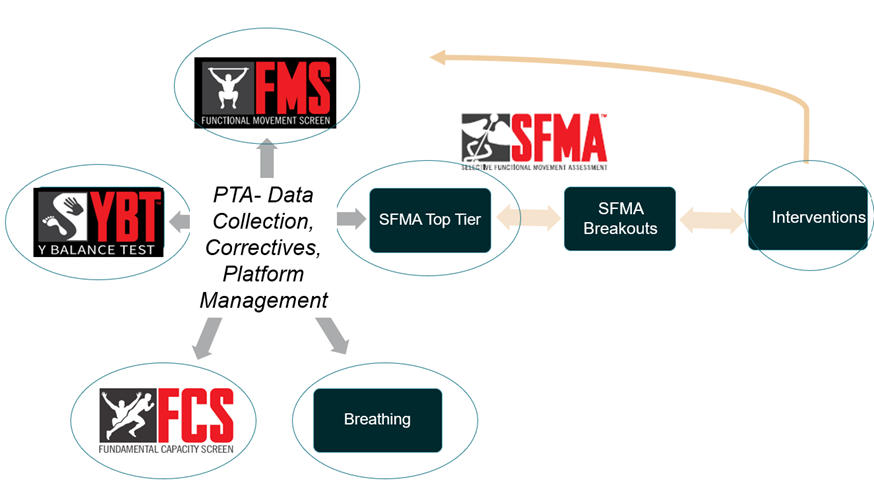Modifiable Risk Factors Predict Injuries in Firefighters During Training Academies
Posted by Kyle Barrow
As the Functional Movement System’s screens and assessments have evolved, many of us are hopeful to integrate multiple components within our business practice. We want to see movement screening available in our community along with a client management model that smoothly transitions individuals to the most appropriate provider as needed throughout their lifespan. A variety of professionals have been identified with important roles in the current FMS system such as the physical therapist, chiropractor, certified athletic trainer, strength and conditioning specialist, personal trainer, and physician. When we look at scalability, cost-savings, and time-efficiency, can the Physical Therapist Assistant (PTA) provide additional value?
In most institutions within the United States, the educational curriculum for the PTA consists of a two-year associate degree followed by the successful completion of a licensure board exam. Many PTA students have a sports-medicine interest but find the job market challenging with limited opportunities. Often these students need to pursue additional degrees and certifications while they are working in a clinical setting. Student debt associated with the traditional Doctor of Physical Therapy pathways and higher education in general has presented additional challenges.
The American Physical Therapy Association (APTA) has supported the PTA Advanced Proficiency Pathway program for PTA specialization, however recent research shows that “only 3% of PTA respondents are currently enrolled in the program in today’s environment”1. The Commission on Accreditation in Physical Therapy Education (CAPTE) identifies roughly 413 total PTA programs and 353 total DPT programs currently in the US. How can these emerging professionals best address our current society’s musculoskeletal health challenges? How can we create a shift from a medical system based on illness to one based on health and wellness?4
The PTA is a well-rounded health care professional who is primarily utilized for data collection and intervention management. They are trained to watch for dysfunctional or compensatory movement patterns. They often excel in documentation and are highly time-efficient with strong communication skills. The vast majority of PTAs, approximately 72%, work in hospitals or privately-owned physical therapy practices.3 When we look for opportunities within the FMS framework for PTAs to add value, there are quite a few possibilities in the provided diagram below.

We know that the PT-PTA model provides a variety of benefits including schedule flexibility, team-based care, and workload management. Encouraging and supporting our PTA professionals as they pursue FMS certifications such as the FMS Level 1 and Level 2, the YBT, and FCS may provide support to all of us using the FMS model.
A few parting thoughts:
Let’s welcome this provider into the FMS family and include their application in our conversations.
Resources:

Amanda Snider is a full-time assistant teaching professor at Penn State Mont Alto in the Physical Therapy Assistant Program. She graduated from Slippery Rock University of Pennsylvania with her Doctor of Physical Therapy and her B.S. in Exercise Science. She is an FMS Fellow. Amanda has a focused interest in wellness initiatives, injury prevention, direct access utilization, and the FMS framework. Before transitioning to academia, she specialized in outpatient clinical care in the private practice sector with attention in practice management and community outreach. Future ambitions include clinical research, clinical skill development, cash-rate private practice/consulting, and education.
Posted by FMS
Hello Amanda. I found your article inspiring. Thank you for writing it. After 19 years as a functional strength business owner in Jackson, WY, I recently reinstated my PTA license. I was unaware of the PTA APP and look forward to learning more about it. Although I primarily focus my efforts on functional strength, I have stayed in close contact with Physical Therapy (my wife is a DPT & worked with PTs within my business) and love the fact that more doors are available for PTAs to evolve and learn, especially through FMS. Thank you. Augustine Hernandez Jr